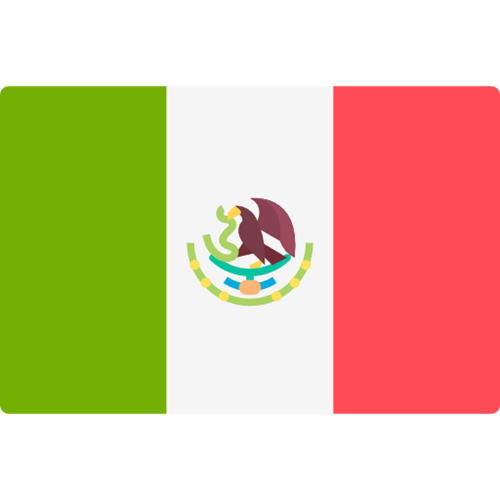Chemicals | Monthly bulletin | November 2023


Europe
European Commission's thinking about the restriction of microplastics intentionally added to products
On 17th October 2023, the European Commission has published its current thinking on the application of the microplastics restriction, (Entry 78 of Annex XVII of REACH), including to plastic glitter on its own and in products.
The prohibition of placing on the market applies as of 17 October 2023 to microplastics including plastic glitter (unless biodegradable or soluble), on their own or intentionally added to products, for uses for which no transitional period is set in the restriction (e.g. art and crafts kits, toys, Christmas decorations, etc..).
Some key points from the European Commission’s thinking as published yesterday:
- Plastic glitter is not affected by the ban if, when used, it is trapped in a solid matrix (e.g. glitter glue), solid films (e.g. paints, inks) or solid objects (e.g. inside jewellery, spray can caps, etc.) or is fully contained (e.g. in snow globes).
- When microplastics, including glitter, are affixed to an article, the scenario is more complex and depends on whether the microplastics can be considered an integral part of that article (and therefore the ban does not apply, because articles are out of scope) or not (in which case the ban applies to the microplastics). As a general rule:
- In case of glittered articles for which the decorative function is secondary - such as textiles used for garments or footwear, glitter is always regarded as an integral part of the article. These glittered articles – e.g.: clothing, shoes, curtains - are out of the scope of the restriction.
- Concerning plastic glitter that is affixed to objects, the sale ban would apply as of 17 October 2023 only to glittered decorative objects (such as - but not limited to - Christmas decorations or toy/party hats) from which glitter detaches during normal use (glitter can only be regarded as an integral part of the article and, therefore, excluded from the ban, if it does not detach from the article during normal end use (including storage))
- At this stage, the Commission is not in a position to recommend a standard test to prove whether glitter detaches during normal end use.
- In order to benefit from the derogation in paragraph 16 of the restriction and continue to be sold, imported products not benefiting from a transitional period under paragraph 6 (e.g. art and craft kits, toys) need to arrive on the customs territory of the EU before 17 October 2023.
The above is the current thinking of the European Commission. It will have to be seen, when the official Q&A guidance about this restriction would be released by the end of the year, how or which method would be recommended to demonstrate that the glitter does not detach during normal use, if any.
For glittered articles to be exempted from this restriction, it is essential to ensure glitter is permanently applied on any type of product so that it is not detached during normal use.
Read the full details of the European Commission’s thinking here.
Completion of the consultation stage on PFAS restriction proposal
On the 25th September 2023, consultation about the proposal to restrict per- and polyfluoroalkyl substances (PFAS) was closed with more than 5.600 comments from more than 4.400 organisations, companies and individuals.
The comments will be reviewed by the five countries (Denmark, Germany, the Netherlands, Norway and Sweden) who prepared the initial proposal, along with ECHA's scientific committees for Risk Assessment (RAC), Socio-Economic Analysis (SEAC). After this, the RAC and SEAC will develop their scientific opinions in order for ECHA to deliver the final opinions to the European Commission.
The Commission, together with the EU Member States, will decide on the restriction.
For more information, consult the ECHA website here.
Restriction proposal on certain chromium (VI) substances
On the 11th October 2023, the European Chemical Agency (ECHA) announced that a European Commission mandate was received which requested the preparation of an Annex XV report for a possible restriction of the chromium (VI) substances that currently from entries 16 and 17 of the REACH Authorisation List (Annex XIV), as a minimum.
The restriction process will follow the standard REACH procedure. The RAC and SEAC will prepare the evaluation, after which the European Commission will adopt the restriction. In this case, the substances will be removed from the Authorisation List, fort the first time in REACH's history.
For more information, consult the ECHA website here.
Interesting links about REACH from the ECHA’s website
- Registry of restriction intentions until outcome - ECHA (europa.eu)
- Registry of SVHC intentions until outcome - ECHA (europa.eu)
- Substance evaluation - CoRAP - ECHA (europa.eu)
- Adopted opinions and previous consultations on applications for authorisation - ECHA (europa.eu)
- Applications for authorisation - current consultations - ECHA (europa.eu)
- Current calls for comments and evidence - ECHA (europa.eu)
- Authorisation List - ECHA (europa.eu)
- ECHA's completed activities on restriction
- Submitted restrictions under consideration
- Assessment of regulatory needs list
Interesting links about CLP on the ECHA’s website
- Registry of CLH intentions until outcome - ECHA (europa.eu)
- Harmonised classification and labelling consultations - ECHA (europa.eu)
France
List of substances with endocrine disrupting properties is established
On the 12th October 2023, the Minister of Ecological Transition and Territorial Cohesion published several Decrees of 28 September 2023 relating to substances with endocrine disrupting properties.
One of the Decrees (text No 13) identifies:
- substances which have properties of endocrine alterations qualified as proven and presumed, may be made available to the public for commercial purposes;
- substances with endocrine disrupting properties classified as suspicious;
- the categories of products that present a particular risk of exposure to which the obligation of information applies to the presence of endocrine disrupting substances classified as suspicious.
Its aim is to provide information to consumers about the presence of substances with endocrine disrupting properties in ingredients, mixtures, articles and food products, as indicated by the AGEC law. This information must be available through electronic means, in open format, easily reusable and usable through an automated process system, for each product. This obligation also applies to certain categories of products that present a particular risk of exposure, which is why these endocrine disrupting properties are classified by ANSES in its specifications.
Another Decree (text No 14) designates an alternative method of informing the public, Scan4Chem, relating to information on the presence of substances which qualify as proven, presumed, or suspected endocrine disrupting properties in products.
These Decrees came into effect on the 13th October 2023.
US
EPA Finalizes PFAS Data Reporting Rule
On September 28, 2023, the U.S. Environmental Protection Agency (EPA) finalized one-time reporting requirements for Per- and Polyfluoroalkyl Substances (PFAS) under Section 8(a)(7) of the Toxic Substances Control Act (TSCA). Under the final rule, any person that manufactures or imports or has manufactured or imported PFAS or PFAS-containing articles in any year since January 1, 2011 will be required to electronically report information to the EPA. Reports must cover in-scope activities in each calendar year from 2011 through 2022. Additionally, there is no de minimis threshold for reporting.
In the final regulation, the EPA decided that a broad structural definition was more suitable for this rule than a specific list of named substances. The final rule defines PFAS as including at least one of these three structures:
- R-(CF2)-CF(R′)R″, where both the CF2 and CF moieties are saturated carbons;
- R–CF2OCF2-R′, where R and R′ can either be F, O, or saturated carbons; and
- CF3C(CF3)R′R″, where R′ and R″ can either be F or saturated carbons.
The EPA has determined that at least 1,462 PFAS that are known to have been made or used in the US since 2011 will meet this definition. The EPA will provide a list of substances that meet this definition on the CompTox Chemicals Dashboard.
The final rule will be effective on November 13, 2023. Under the final rule, companies will have one year to collect the information required to be reported, followed by a six-month period during which reports must be submitted to the EPA. Most companies obligated to submit reports will have a reporting deadline of May 8, 2025. They can start reporting from November 12, 2024. However, “small manufacturers” only involved in importing articles will have additional 6 months to collect the data and have until November 10, 2025, to report. All submissions should be made via the EPA's CDX portal.
The rule prescribes information required to be reported by a person manufacturing or importing PFAS substance or PFAS in a mixture using the Standard Form. The rule also allows person that imported articles containing PFAS to use a Streamlined Form. Following information will be required for the Streamline Form:
- Company and plant site information.
- Chemical-specific information
- Categories of use
- Imported article production volume.
- Additional article data: The submitter has the option to provide relevant additional information to EPA including supplemental attachments.
Recordkeeping Requirement: Each person who is subject to the reporting requirements of this rule must retain records that document any information reported to the EPA. Relevant records must be retained for a period of 5 years beginning on the last day of the submission period.
Small manufacturer means a manufacturer (including importer) that meets either of the following standards:
- First standard. A manufacturer (including importer) of a substance is small if its total annual sales, when combined with those of its parent company (if any), are less than $120 million. However, if the annual production or importation volume of a particular substance at any individual site owned or controlled by the manufacturer or importer is greater than 45,400 kilograms (100,000 lbs), the manufacturer (including importer) will not qualify as small for purposes of reporting on the production or importation of that substance at that site, unless the manufacturer (including importer) qualifies as small under paragraph (2) of this definition.
- Second standard. A manufacturer (including importer) of a substance is small if its total annual sales, when combined with those of its parent company (if any), are less than $12 million, regardless of the quantity of substances produced or imported by that manufacturer (including importer).
- Inflation index. EPA shall make use of the Producer Price Index for Chemicals and Allied Products, as compiled by the U.S. Bureau of Labor Statistics, for purposes of determining the need to adjust the total annual sales values and for determining new sales values when adjustments are made. EPA may adjust the total annual sales values whenever the Agency deems it necessary to do so, provided that the five-year average of the Producer Price Index for Chemicals and Allied Products has changed more than 20 percent since either the most recent previous change in sales values or May 28, 2020, whichever is later. EPA shall provide Federal Register notification when changing the total annual sales values.
For more information, consult the official publication 40 CFR part 705 here.
OEHHA Proposes Amendment to Proposition 65 Short-Form Warning Requirements
California’s Proposition 65 (Prop 65) requires businesses to provide “clear and reasonable” warnings to Californians about significant exposures to chemicals known to the state to cause cancer, birth defects or other reproductive harm. In 2018, the California Office of Environmental Health Hazard Assessment’s (OEHHA) most recent Prop 65 amendments went into effect, which included short-form safe harbor warnings as an alternative to the standard safe harbor warnings. The short-form warnings do not require identification of a specific chemical exposure for which a warning is being given, and the OEHHA has determined that further amendments are necessary to further the purposes of Prop 65.
On October 27, 2023, the OEHHA issued a Notice of Proposed Rulemaking (NPR) to amend Prop 65 Article 6, Clear and Reasonable Warnings. The NPR includes the following notable changes:
- Require identification of a specific chemical for which the short-form warning is being given.
- Clarify that short-form warnings may be used to provide safe harbor warnings for food products.
- Clarify existing safe harbor warning requirements for products sold on the internet and in catalogs.
- Add signal word options for food warnings.
- Add new sections 50, 25607.51, 25607.52, and 25607.53 to create tailored warning methods and content for exposures to listed chemicals from passenger or off-highway vehicle parts and recreational marine vessel parts.
The following table provides a comparison between the current and proposed short form warning requirements:
| Exposure to: | Current warning | Proposed warning |
|
Carcinogen |
WARNING: Cancer – www.P65Warnings.ca.gov |
WARNING or CA WARNING or CALIFORNIA WARNING: |
|
Reproductive toxicant |
WARNING: Reproductive Harm – www.P65Warnings.ca.gov |
WARNING or CA WARNING or CALIFORNIA WARNING: |
|
Carcinogens and reproductive toxicants |
WARNING: Cancer and Reproductive Harm – www.P65Warnings.ca.gov |
WARNING or CA WARNING or CALIFORNIA WARNING: |
|
Listed as both carcinogen and reproductive toxicant |
WARNING: Cancer and Reproductive Harm – www.P65Warnings.ca.gov |
WARNING or CA WARNING or CALIFORNIA WARNING: |
OEHHA has proposed that the proposed revised warnings will be required for products manufactured two years after the effective date of the amendments.
The deadline for public comments is December 20, 2023.
Sustainability, circular economy and environment
Miscellaneous technical publications relating to environmental, plastics, packaging and waste
The table below summarises the most recent publications regarding the environment, circular economy, and sustainability (non-exhaustive):
| Entity | Date | Publication |
|
United Nations |
04/09/2023 |
|
|
European Commission |
20/09/2023 |
This directive establishes a common framework of measures to promote energy efficiency within the European Union in order to ensure that its targets on energy efficiency are met and to enable further energy efficiency improvements. The aim of that common framework is to contribute to the implementation of Regulation (EU) 2021/1119 of the European Parliament and of the Council and to the security of the European Union’s energy supply by reducing its dependence on energy imports, including fossil fuels. |
|
European Commission |
26/09/2023 |
Commission Delegated Regulation (EU) 2023/2049 of 14 July 2023 amending Regulation (EU) 2017/852 of the European Parliament and of the Council as regards mercury-added products subject to manufacturing, import and export prohibitions. |
|
European Commission |
27/09/2023 |
|
|
European Commission |
27/09/2023 |
|
|
European Commission |
16/10/2023 |
The Commission proposes measures to reduce microplastic pollution from plastic pellets Plastic pellets are the one of the largest sources of unintentional microplastic pollution. The Commission has proposed that operators act in order of priority as follows: prevention of any spills of pellets; containment of spilled pellets to make sure they do not pollute the environment; and, as a final option, clean up after a spill or loss event. |
|
European Commission |
16/10/2023 |
This delegated act is part of a group of initiatives for creating the EU system and lays down the procedure for amending the European positive list (‘EUPL’) of starting substances, compositions or constituents to be used in the manufacture of materials or products intended to be in contact with drinking water. |
|
European Commission |
16/10/2023 |
Drinking water – Marking of products in contact with drinking water This delegated act is part of a group of initiatives for creating the EU system. It will draw up harmonised specifications for the marking of products to be used in contact with drinking water. |
















































